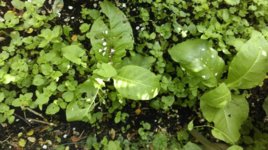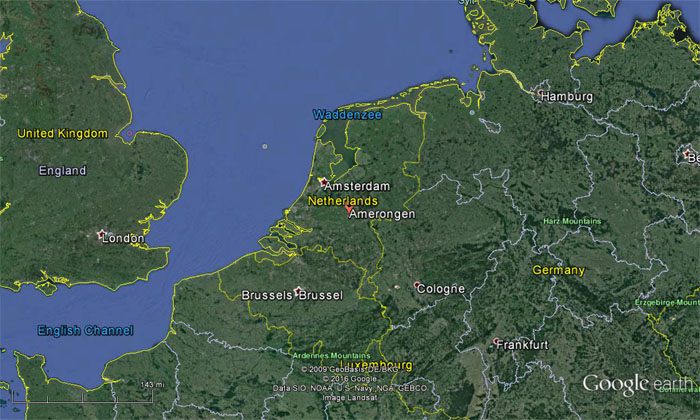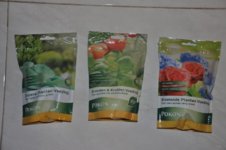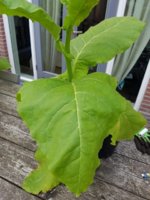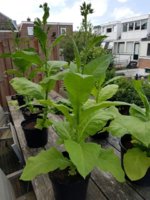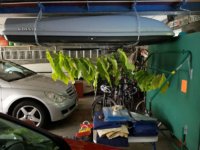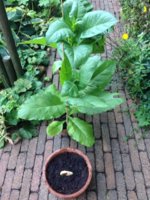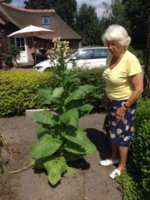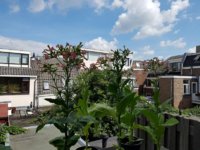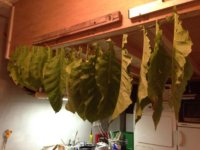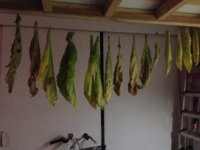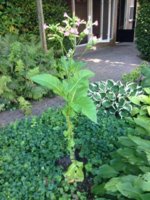Tutu
Well-Known Member
This thread is dedicated to a cigar variety from the Netherlands, around the area of Rhenen, Elst and Amerongen. I first came into contact with this variety upon visiting the Tabaksteeltmuseum in Amerongen. I grew up in the region and often passed the old curing barns that are no longer in use for the curing of tobacco. Much information can be found on the website of the museum, although in Dutch. Even more information can be obtained by going to the museum itself. It has a wonderful collection of items and they are still growing, curing and fermenting some tobacco for exhibit purposes. Exploring the area by bike is also highly recommended. But I suppose not many of you regularly visit the Netherlands, nor do you speak Dutch. Therefore a little summary of its history, translated from their website:
"Around 1615 the first tobacco was grown in the area of Amersfoort. From there onward it was expanded to Nijkerk, Barneveld, Ede, Wageningen, and further on to the Utrechtse Heuvelrug. The Netherlands soon took a special place as a producer of tobacco. Our country was the first to use hotbeds to germinate young seedlings. Around 1635 this method spread to other places in Europe and was known as the "Dutch method". Between 1700 and 1800 the domestic tobacco became an important product of trade. In 1900 the growing of tobacco around Amersfoort had almost disappeared. Only in the Betuwe, especially between Amerongen and Rhenen there remained some tobacco fields."
In the early 20th century international trade grew and the tobacco from the Netherlands was no longer market competitive. At first the Dutch tobacco was still being used as wrapper / binder with filler imported from the United States, but it disappeared as the Dutch climate is less favourable for growing tobacco than many other regions of the world. Growing tobacco returned during the second World War, not just for consumption but also as a means of trade. Only to vanish again soon after.
As I had mentioned earlier in another thread, the Tabaksteeltmuseum in Amerongen distributes seeds in ziplock bags. As they have kept the variety alive after all those years, I feel it deserves to be called "Amerongen". My first visit to the museum was on June 9th 2015. Early April 2016 I contemplated a plan, growing seedlings during the few weeks I was in the Netherlands and spreading them among friends and family. So I did. None of them had any prior experience with growing tobacco, nor do I. I thought it would be a nice experiment to see how these plants would grow under different circumstances. The results vary, and I will show exactly how. Myself, I have a few seedlings of this variety in Indonesia and will post updates on their growth. First, some pictures of what has happened in the last few months.
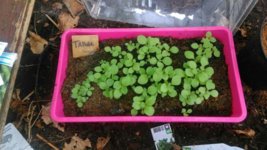
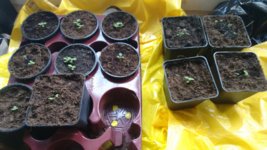
Seeds were sowed on two different locations, in Akkrum (Friesland) and in Utrecht (Utrecht). Those in Friesland where the ones spread among a lot of different people and those in Utrecht were continued in the same place by one particular friend who has kept regular updates so the focus here will be on his plants. The main focus will be on Utrecht, and a few others will be shown.
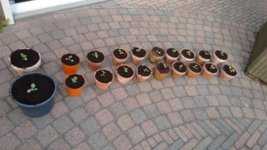
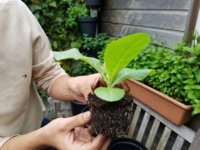
On the first picture we witness the seedlings that I distributed. They were taken from the pink tray shown in the previous image. We will later see a few examples of how they turned out. On the second picture I said farewell to the plants in Utrecht, which were then turned into larger containers. The plants in Utrecht where always kept in containers as there was no place close to the ground receiving sunlight.


The Amerongen tobacco showed steady growth in Utrecht after I left for Indonesia. They were moved up on the balcony because there was slightly more sun exposure and space to add a few more plants. Although all plants germinated on the same day, two are considerably larger because they were kept in in the bathroom at the top floor of the house which served as a greenhouse due to the frosted glass roof windows. The others had been kept inside the house without exposure to direct sun.



These are pictures from a friend who received transplants that were germinated in Friesland. They are being grown in Bennekom (Gelderland) and the last two pictures are the most recent update of the plants. As you can see, they were transplanted into normal soil, rather than being kept in containers. Hopefully I will be able to post updates of them in the future.
"Around 1615 the first tobacco was grown in the area of Amersfoort. From there onward it was expanded to Nijkerk, Barneveld, Ede, Wageningen, and further on to the Utrechtse Heuvelrug. The Netherlands soon took a special place as a producer of tobacco. Our country was the first to use hotbeds to germinate young seedlings. Around 1635 this method spread to other places in Europe and was known as the "Dutch method". Between 1700 and 1800 the domestic tobacco became an important product of trade. In 1900 the growing of tobacco around Amersfoort had almost disappeared. Only in the Betuwe, especially between Amerongen and Rhenen there remained some tobacco fields."
In the early 20th century international trade grew and the tobacco from the Netherlands was no longer market competitive. At first the Dutch tobacco was still being used as wrapper / binder with filler imported from the United States, but it disappeared as the Dutch climate is less favourable for growing tobacco than many other regions of the world. Growing tobacco returned during the second World War, not just for consumption but also as a means of trade. Only to vanish again soon after.
As I had mentioned earlier in another thread, the Tabaksteeltmuseum in Amerongen distributes seeds in ziplock bags. As they have kept the variety alive after all those years, I feel it deserves to be called "Amerongen". My first visit to the museum was on June 9th 2015. Early April 2016 I contemplated a plan, growing seedlings during the few weeks I was in the Netherlands and spreading them among friends and family. So I did. None of them had any prior experience with growing tobacco, nor do I. I thought it would be a nice experiment to see how these plants would grow under different circumstances. The results vary, and I will show exactly how. Myself, I have a few seedlings of this variety in Indonesia and will post updates on their growth. First, some pictures of what has happened in the last few months.


Seeds were sowed on two different locations, in Akkrum (Friesland) and in Utrecht (Utrecht). Those in Friesland where the ones spread among a lot of different people and those in Utrecht were continued in the same place by one particular friend who has kept regular updates so the focus here will be on his plants. The main focus will be on Utrecht, and a few others will be shown.


On the first picture we witness the seedlings that I distributed. They were taken from the pink tray shown in the previous image. We will later see a few examples of how they turned out. On the second picture I said farewell to the plants in Utrecht, which were then turned into larger containers. The plants in Utrecht where always kept in containers as there was no place close to the ground receiving sunlight.


The Amerongen tobacco showed steady growth in Utrecht after I left for Indonesia. They were moved up on the balcony because there was slightly more sun exposure and space to add a few more plants. Although all plants germinated on the same day, two are considerably larger because they were kept in in the bathroom at the top floor of the house which served as a greenhouse due to the frosted glass roof windows. The others had been kept inside the house without exposure to direct sun.



These are pictures from a friend who received transplants that were germinated in Friesland. They are being grown in Bennekom (Gelderland) and the last two pictures are the most recent update of the plants. As you can see, they were transplanted into normal soil, rather than being kept in containers. Hopefully I will be able to post updates of them in the future.


